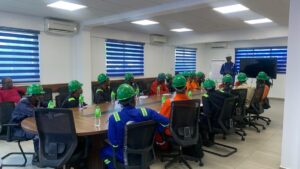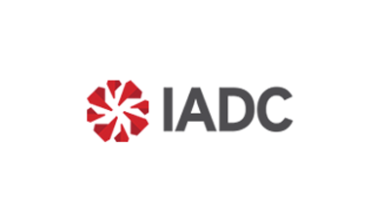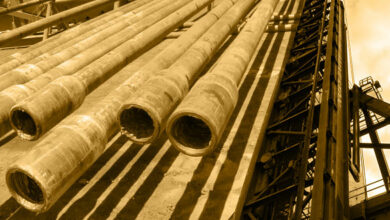News Cuttings

Student Chapter at Petroleum Training Institute visits Geoplex Drillteq in Nigeria
On 18 July, the IADC Student Chapter at the Petroleum Training Institute visited Geoplex Drillteq in Port Harcourt, Nigeria. This visit was part of the chapter’s ongoing efforts to give student members practical exposure to field operations, equipment handling and the daily realities of working in the oil and gas industry. The delegation consisted of student members from different petroleum-related departments.
The primary aim of the trip was to:
- Learn directly from industry professionals;
- Understand the application of drilling, perforation, cementing and coiled-tubing operations; and
- Observe field equipment up close and interact with experienced personnel.
Upon arrival, the students were taken around the Geoplex Drillteq base and introduced to several specialized units. Some of the key areas they explored included drilling tools and bottomhole assemblies, perforation and cementing units, coiled-tubing systems, and maintenance and calibration workshops.
Several experts from the company gave short talks. These sessions helped students better understand the technical challenges and the problem-solving mindset needed in field operations. Topics covered included:
- Directional drilling principles and real-world application;
- Steps in planning and executing a cementing job;
- Safety and precision in perforation; and
- How coiled tubing is used in interventions and cleanouts.
The students also had the chance to observe how tools are maintained, redressed and prepared for deployment.
Southeast Asia Chapter celebrates 40th anniversary at Safety Awards Gala
On 14 May, the IADC Southeast Asia Chapter celebrated its 40th anniversary at its Annual Safety Awards Gala Presentation and Banquet. The event took place in conjunction with the IADC HSE & Sustainability Asia Pacific 2025 Conference & Exhibition, which was held 14-15 May in Bangkok, Thailand.
The award recipients were:
- Best Incident Rate – Offshore Rig: Shelf Drilling Enterprise
- Best Incident Rate – Offshore Company: Velesto Energy
- Best Incident Rate; Years Recordable Free – Onshore Company & Rig: PT Pertamina Drilling Services Indonesia – PDSI #23.1/CWKT210-M, PDSI #40.4/LDW2000-E
- Years Recordable Free – Offshore Rig: Velesto Naga 6
- Best Sustainability Initiatives: 1st: American Bureau of Shipping / 2nd: OES Asset Integrity Management / 3rd: ABL Group.
 YPs practice impromptu speaking skills at IADC event
YPs practice impromptu speaking skills at IADC event
The IADC Young Professionals Committee hosted a professional development event, “Making Memorable First Impressions: The Skill of Impromptu Speaking,” at Transocean’s office in Houston on 10 July.
A group of expert facilitators from Toastmasters International, led by Transocean Senior Manager Andrew Gordon Rennie, helped attendees hone their impromptu speaking skills. Key techniques were covered, including:
- The importance of body language, gestures and facial expressions;
- How to warm up and focus when nervous; and
- Speaking with vocal variety.
Attendees then had a chance to practice what they learned in breakout groups.



